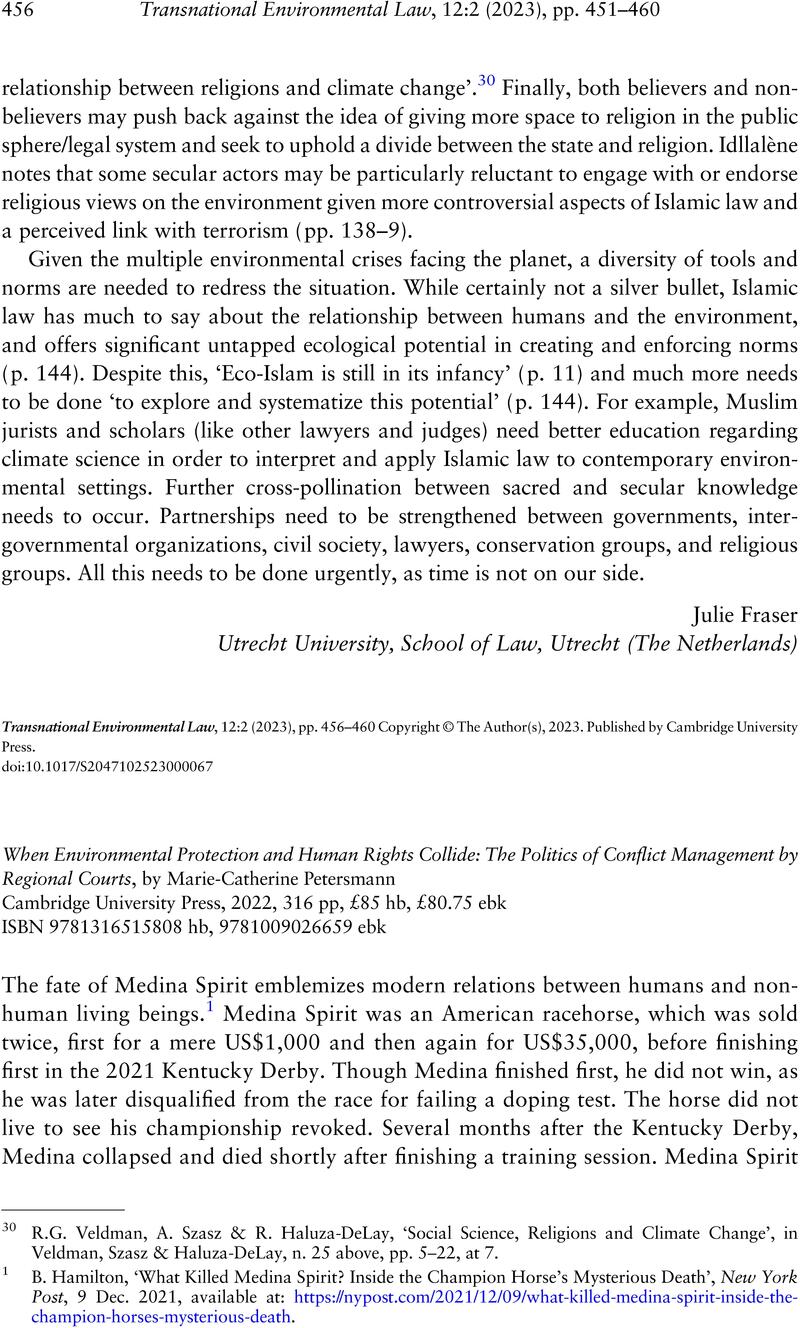No CrossRef data available.
Published online by Cambridge University Press: 17 May 2023

1 B. Hamilton, ‘What Killed Medina Spirit? Inside the Champion Horse's Mysterious Death’, New York Post, 9 Dec. 2021, available at: https://nypost.com/2021/12/09/what-killed-medina-spirit-inside-the-champion-horses-mysterious-death.
2 Gilbert, J., Natural Resources and Human Rights: An Appraisal (Oxford University Press, 2018)CrossRefGoogle Scholar; Dehm, J., Reconsidering REDD+: Authority, Power and Law in the Green Economy (Cambridge University Press, 2021)CrossRefGoogle Scholar; Natarajan, U., ‘Who Do We Think We Are? Human Rights in a Time of Ecological Change’, in Dehm, J. & Natarajan, U. (eds), Locating Nature: Making and Unmaking International Law (Cambridge University Press, 2022), pp. 200–28CrossRefGoogle Scholar; Boysen, S., Die postkoloniale Konstellation (Mohr Siebeck, 2021)CrossRefGoogle Scholar.
3 ECtHR, Buckley v. United Kingdom, App. No. 20348/92, Judgment of 29 Sept. 1996; ECtHR, Chapman v. United Kingdom, App. No. 27238/95, Judgment of 28 Jan. 2001; ECtHR, Jane Smith v. United Kingdom, App. No. 25154/94, Judgment of 18 Jan. 2001; ECtHR, Lee v. United Kingdom, App. No. 25289/94, Judgment of 18 Jan. 2001.
4 Koskenniemi, M., From Apology to Utopia: The Structure of International Legal Argument (Cambridge University Press, 2006)CrossRefGoogle Scholar.
5 Chimni, B.S., ‘WTO and Environment: Legitimisation of Unilateral Trade Sanctions’ (2002) 37(2) Economic and Political Weekly, pp. 133–9Google Scholar; Fakhri, M., ‘Markets, Sovereignty, and Racialization’ (2022) 25(2) Journal of International Economic Law, pp. 242–58CrossRefGoogle Scholar.
6 Fischer-Lescano, G. Teubner & A., ‘Regime-Collisions: The Vain Search for Legal Unity in the Fragmentation of Global Law’ (2004) 25(4) Michigan Journal of International Law, pp. 999–1046Google Scholar.
7 Latour, B., We Have Never Been Modern (Harvard University Press, 1993)Google Scholar.
8 Buller, A., The Value of a Whale: On the Illusions of Green Capitalism (Manchester University Press, 2022)CrossRefGoogle Scholar.